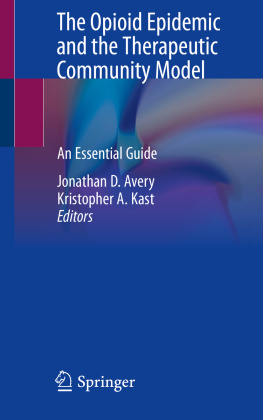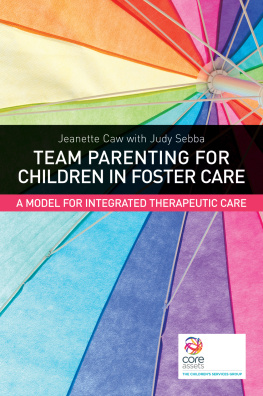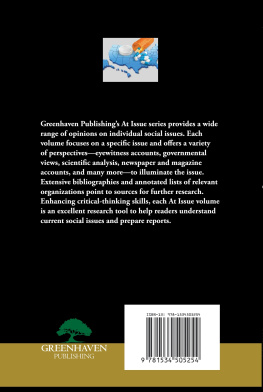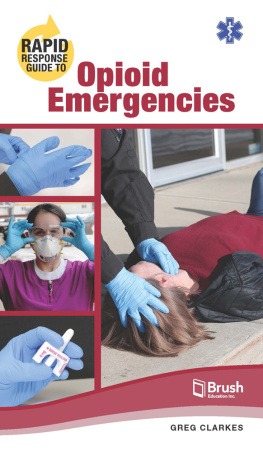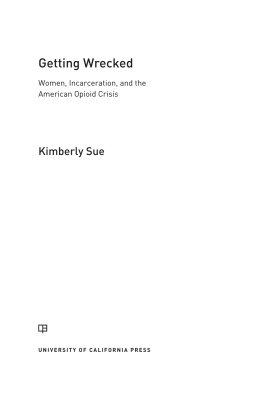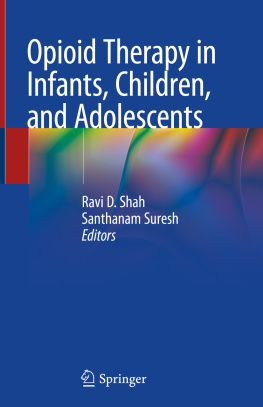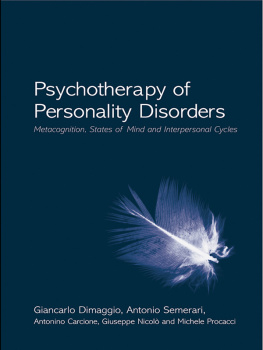Editors
Jonathan D. Avery and Kristopher A. Kast
The Opioid Epidemic and the Therapeutic Community Model
An Essential Guide
Editors
Jonathan D. Avery
Weill Cornell Medical College, New York, NY, USA
Kristopher A. Kast
Payne Whitney Clinic of New York-Presbyterian, Weill Cornell Medical College, New York, NY, USA
ISBN 978-3-030-26272-3 e-ISBN 978-3-030-26273-0
https://doi.org/10.1007/978-3-030-26273-0
Springer Nature Switzerland AG 2019
This work is subject to copyright. All rights are reserved by the Publisher, whether the whole or part of the material is concerned, specifically the rights of translation, reprinting, reuse of illustrations, recitation, broadcasting, reproduction on microfilms or in any other physical way, and transmission or information storage and retrieval, electronic adaptation, computer software, or by similar or dissimilar methodology now known or hereafter developed.
The use of general descriptive names, registered names, trademarks, service marks, etc. in this publication does not imply, even in the absence of a specific statement, that such names are exempt from the relevant protective laws and regulations and therefore free for general use.
The publisher, the authors, and the editors are safe to assume that the advice and information in this book are believed to be true and accurate at the date of publication. Neither the publisher nor the authors or the editors give a warranty, expressed or implied, with respect to the material contained herein or for any errors or omissions that may have been made. The publisher remains neutral with regard to jurisdictional claims in published maps and institutional affiliations.
This Springer imprint is published by the registered company Springer Nature Switzerland AG
The registered company address is: Gewerbestrasse 11, 6330 Cham, Switzerland
Acknowledgments
The authors would like to thank Daniele Bodini, the Alexander Bodini Foundation, and Friends of San Patrignano, USA, for their support of this work.
Contents
Kristopher A. Kast and Jonathan D. Avery
George De Leon
Fernando B. Perfas
Rachel Knight
Joseph Bravoco
Kristopher A. Kast
Phaedon Kaloterakis
Andrew Tuck and Lauren Stossel
Gabriele Manella , Giovanni Pieretti , Alessandra Landi and Bruno Genetti
Contributors
Jonathan D. Avery MD
Weill Cornell Medical College, New York, NY, USA
Joseph Bravoco
New York-Presbyterian Hospital/Weill Cornell Medical Center, New York, NY, USA
George De Leon
Department of Psychiatry, New York University School of Medicine, New York, NY, USA
Bruno Genetti
Centro Studi Explora, Padua, Italy
Phaedon Kaloterakis
KETHEA, European Federation of Therapeutic Communities (EFTC), World Federation of Therapeutic Communities (WFTC), Thessaloniki, Greece
Kristopher A. Kast MD
Payne Whitney Clinic of New York-Presbyterian, Weill Cornell Medical College, New York, NY, USA
Rachel Knight MD
New York Presbyterian Weill Cornell Medical Center, New York, NY, USA
Alessandra Landi
Department of Sociology and Business Law, University of Bologna, Bologna, Italy
Gabriele Manella
Department of Sociology and Business Law, University of Bologna, Bologna, Italy
Fernando B. Perfas PhD
Addiction Training Consultant, Red Hook, NY, USA
Giovanni Pieretti
Department of Sociology and Business Law, University of Bologna, Bologna, Italy
Lauren Stossel MD
Correctional Health Services, NYC Health+Hospitals, New York, NY, USA
Andrew Tuck BS
Columbia University Vagelos College of Physicians & Surgeons, New York, NY, USA
1. An Introduction to the Opioid Epidemic and Therapeutic Communities
The Opioid Epidemic
Opioids have been written into our contemporary American zeitgeist, overflowing the prescription pads that have flooded medicine cabinets and illicit marketplaces with up to 80 scripts per 100 persons at the peak of the crisis we have collectively faced since the turn of the twenty-first century [].
In 2017, 4.2% of the United States general population has been exposed to opioids in a way not directed by a prescribing clinicianincluding use without a prescription and use in greater amounts, more often, or for longer periods than directed [].
In the United States, OUD and its associated morbidity and mortality have received increasing attention from national public health authorities, medical professional organizations, federal and local government, and the lay press over the past decade. Contemporary OUD is most commonly associated with prescription opioid usenow threefold more frequent than OUD associated with heroin useand prescription opioid overdose deaths have quadrupled between 1999 and 2011, continuing to rise to a peak of 72,000 total drug overdose deaths per year in 2017.
This opioid epidemic, or crisis, has motivated a series of federal responses, including the Comprehensive Addiction and Recovery Act ( CARA) of 2016 [].
However, a significant group continues opioid use with its grave risks despite these first-line treatments, marking a population with treatment-resistant opioid use disorder for whom additional interventions are required. For some patients, relative medical contraindications or aversions to one or all of the available medications also limit their ability to benefit from MAT.
Further, the current system of care wherein MAT is delivered emphasizes short-term rehabilitation, with 30- or 60-day lengths of stay ( LOS) being most common. This is problematic for the treatment-resistant population in light of the multiply-replicated finding that greater LOS improves substance use-related outcomeswith a likely inflection point at 90 days and continued benefit with even longer treatment for more severely impaired individuals [].
Therapeutic Communities
The therapeutic community ( TC) is a treatment modality that addresses OUD via mechanisms of action that differ from MAT and other common interventions currently available in the United Statesincluding longer LOS , cognitive schema change, increased mentalization capacity, social learning, and educational/occupational habilitation. TCs may either complement current standards of care or serve as monotherapy for patients with severe, treatment-refractory OUD [].

